What Are SEO Keywords?
SEO keywords are words or phrases you want to optimize your website around to rank higher in search results.
Search engines (like Google) use complex algorithms to determine rankings. But keywords are a core part of that process.
Using these terms on your website indicates to search engines what your pages are about. So they can be shown for relevant queries.
Let’s say you have an ecommerce store that sells outdoor gear. Some relevant SEO keywords for your website could be:
- “hiking backpacks”
- “camping tents”
- “lightweight sleeping bags”
- “trail running shoes”
Ranking for these keywords in Google puts your content and products in front of motivated shoppers searching for those exact terms.
That means more potential leads, customers, and revenue.
How to Find SEO Keywords for Your Website
Use a Keyword Research Tool
Keyword Magic Tool
Semrush’s Keyword Magic Tool lets you find SEO keywords for your website based on a single seed term (a broad topic related to your business).
Let’s say you have a food blog that shares recipes. Enter a seed keyword into the search box and click “Search.”
The tool will then show you a long list of related keywords that people search for on Google.
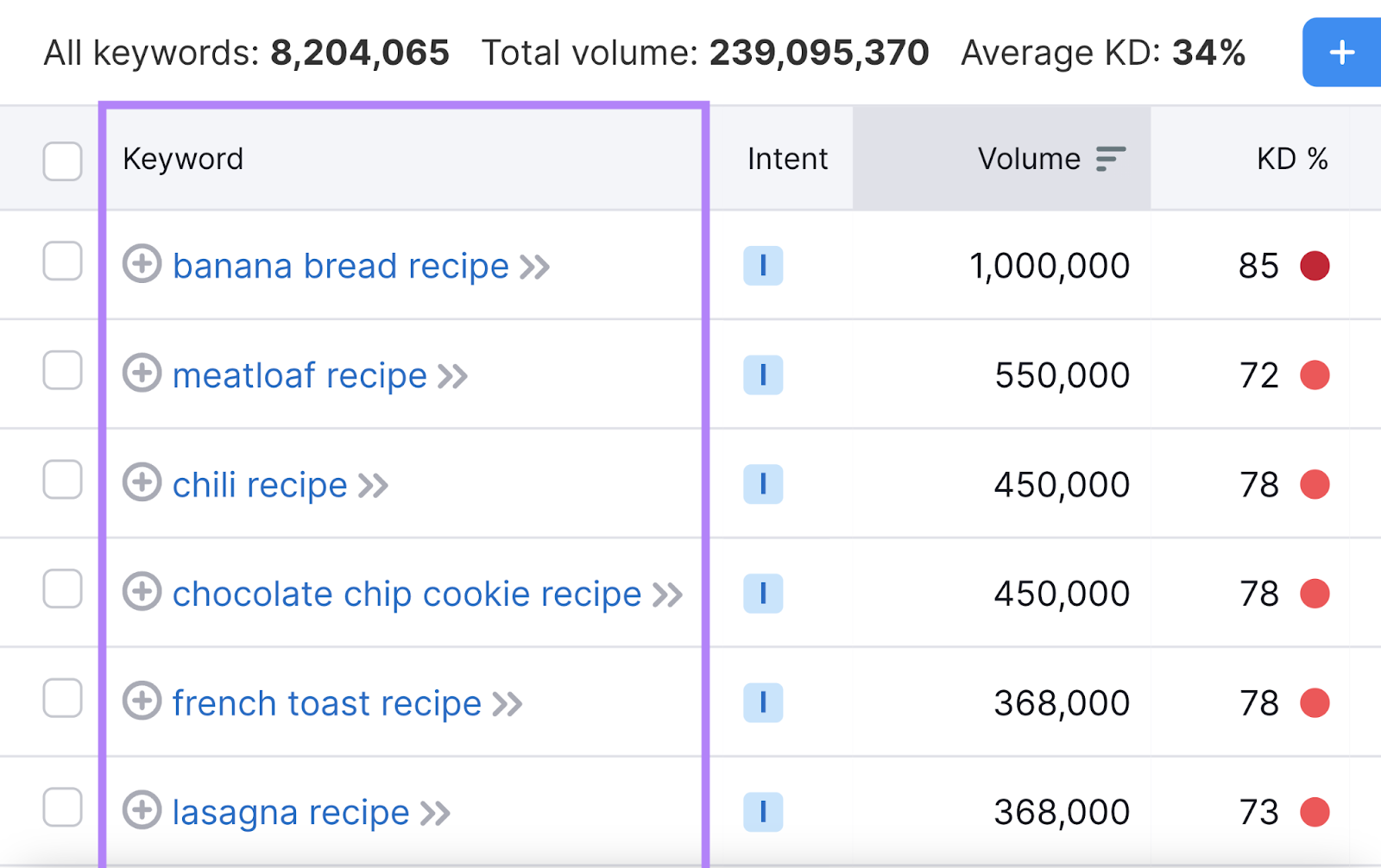
How do you know which keywords to choose?
First, look at the search intent—the reason why users perform a search.
There are four main search intent categories:
- Navigational: Users are looking for a specific website or page (e.g., “food network website”)
- Informational: Users want to learn something (e.g., “how to brine chicken”)
- Commercial: Users are researching products or services (e.g., “best air fryers”)
- Transactional: Users want to buy something (e.g., “buy air fryer online”)
Continuing with our example of a food blog, you’ll mostly be creating informational content. So you should focus on keywords with informational search intent.
Another thing you need to consider is keyword difficulty (KD %)—a measure of how hard it is to rank on the first page of Google results for a given keyword.
If your blog is new, it’s best to target terms with low difficulty scores (under 30%). Because you likely can’t rank yet for very competitive terms.
But the general keyword difficulty metric doesn’t tell the whole story. So, enter your domain at the top of the page to get your Personal Keyword Difficulty (PKD %) score—a measure of how difficult it is for your specific domain to rank for a particular term.
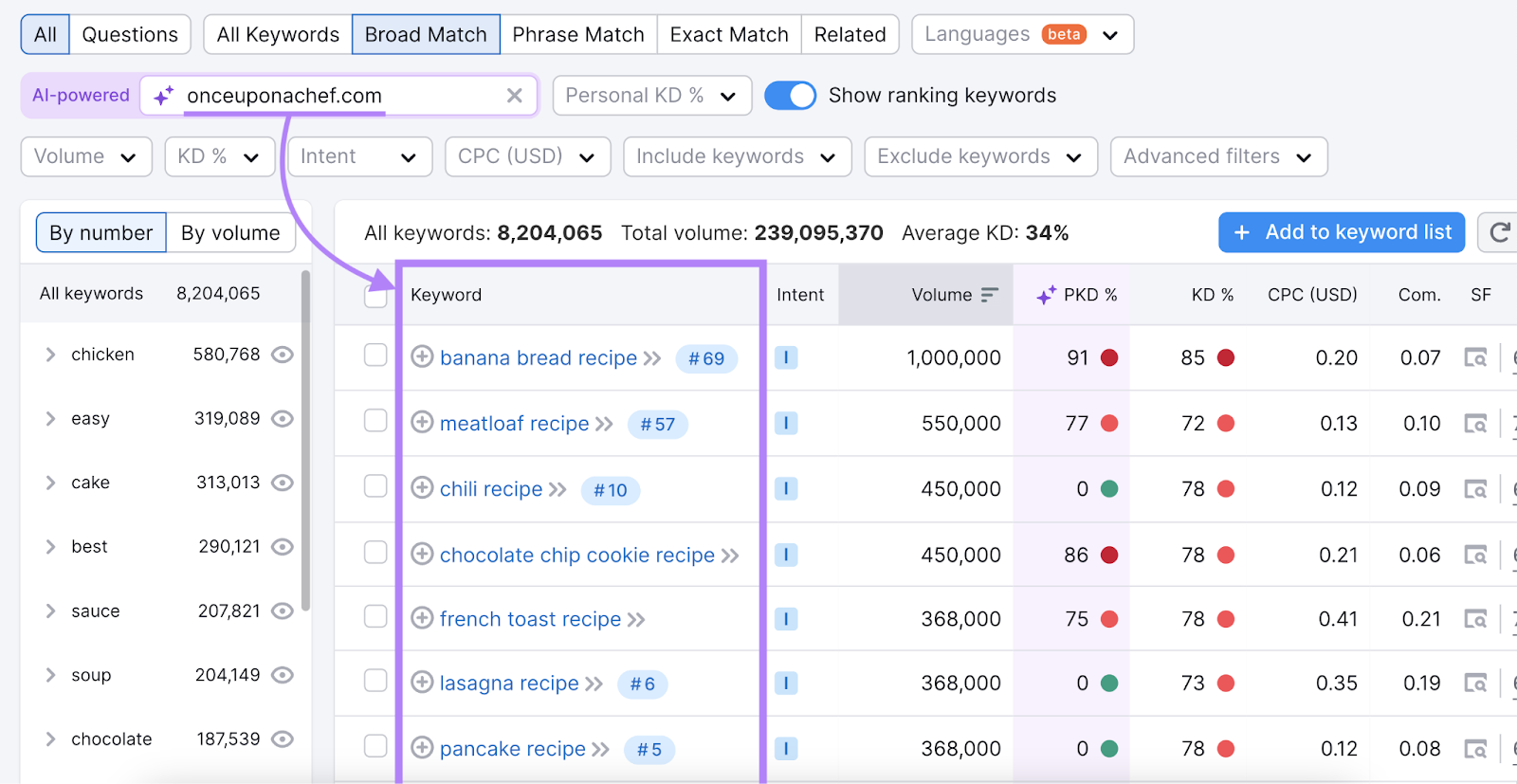
Then, apply both search intent and PKD % filters in the Keyword Magic Tool to narrow down to options that meet these criteria.
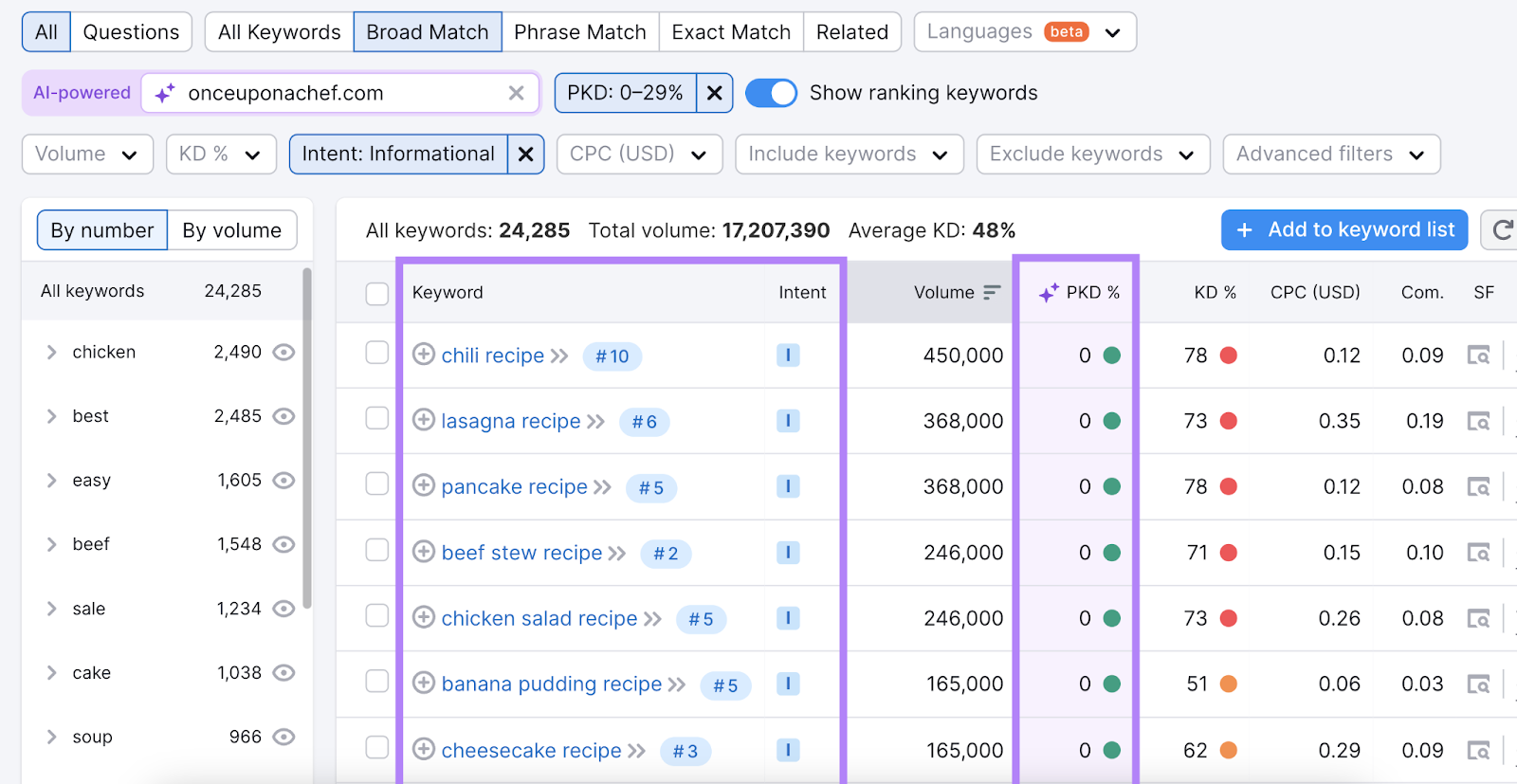
Lastly, consider the search volume (the average number of monthly searches a term gets). While you don’t want to get overly focused on it, it’s best to choose terms that have at least a decent number of searches.
This is just one method for finding keywords. We explore other methods below.
Keyword Planner
Google’s Keyword Planner is a free tool designed for advertisers who use Google Ads. But it can also be useful in finding keywords for SEO.
To access it, sign in to Google Ads. Then, click the “Tools” menu and select “Keyword Planner.”
After that, click “Discover new keywords”
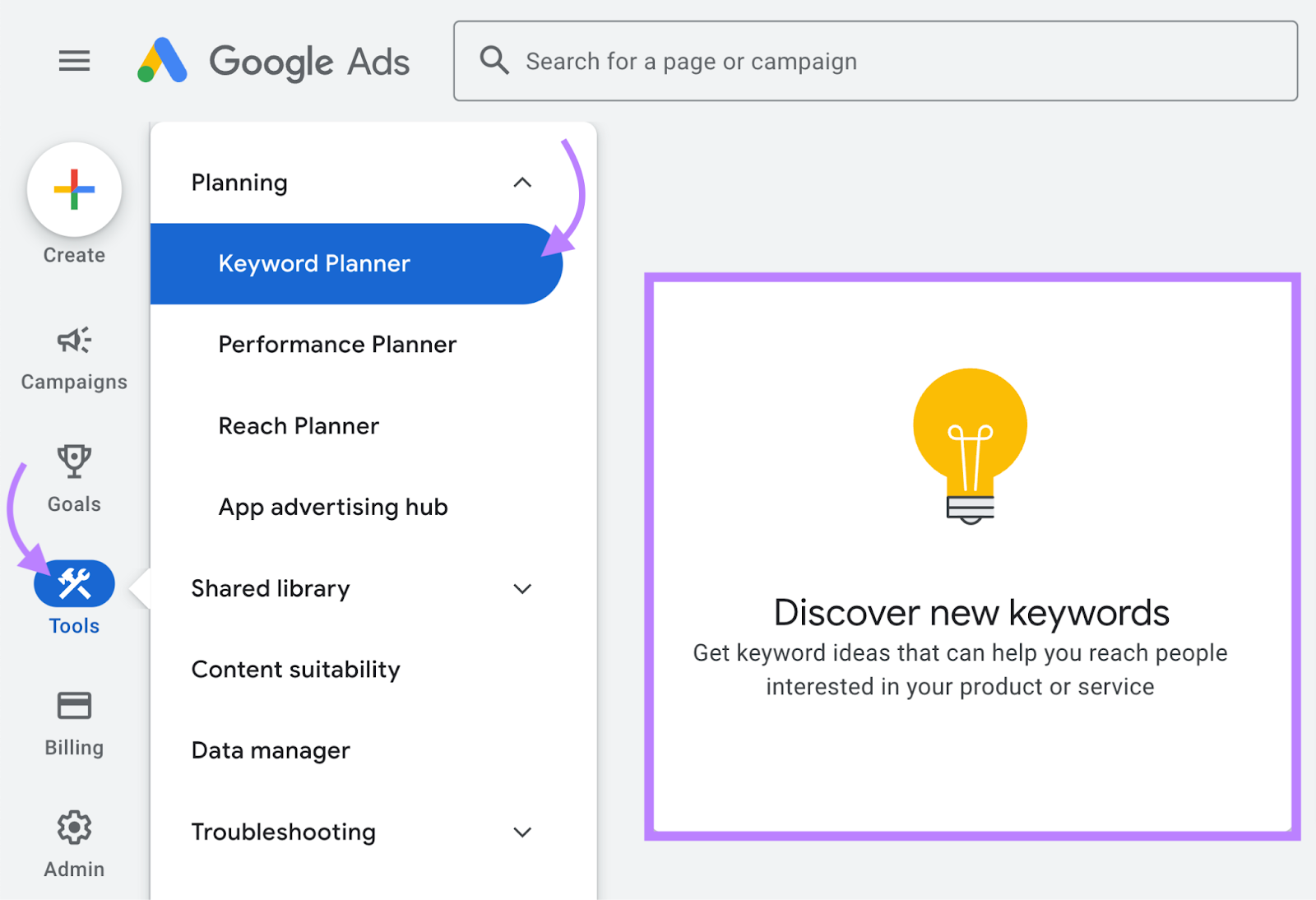
Enter a seed keyword related to your website. And click “Get results.”
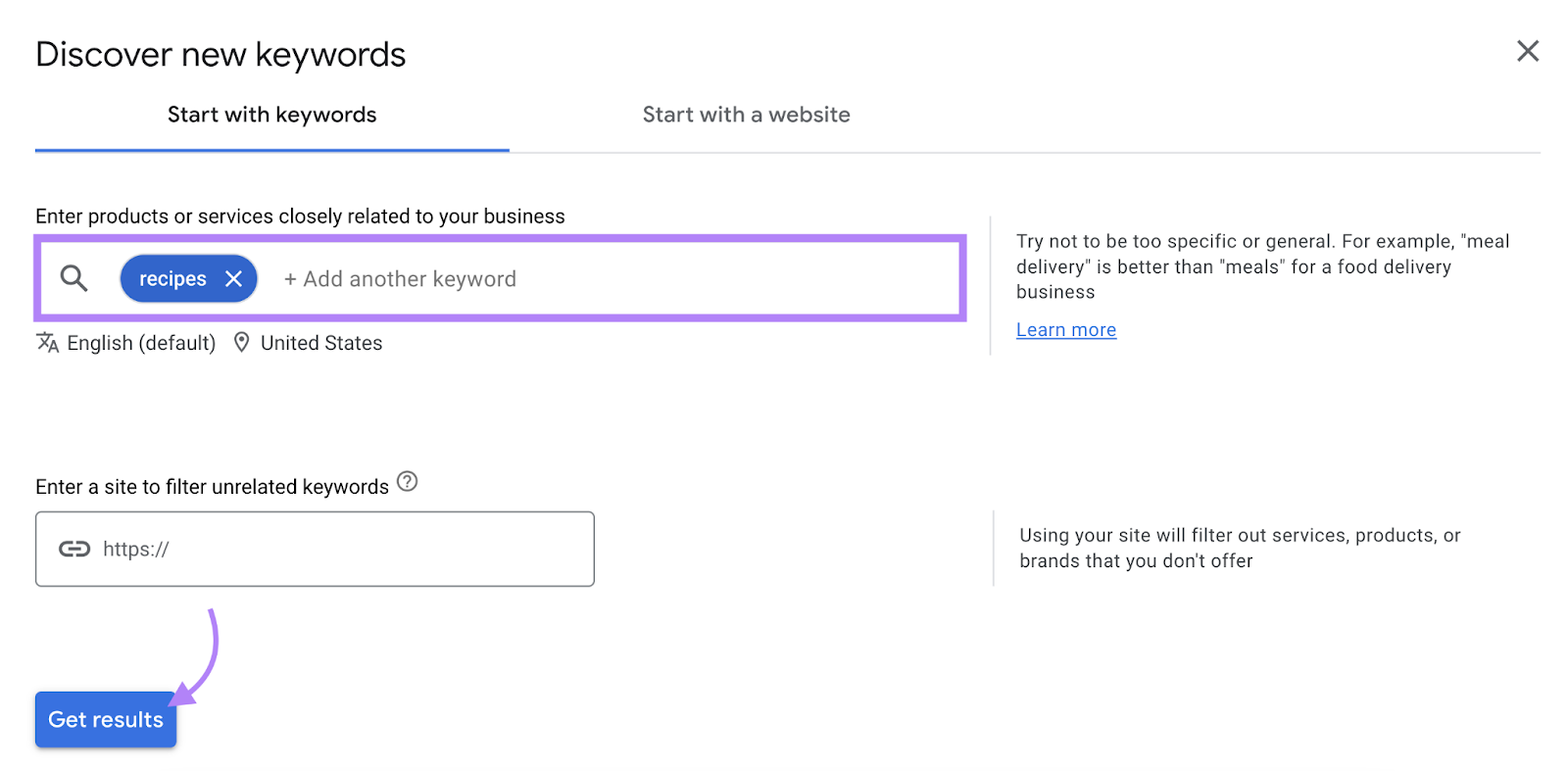
The tool will generate related keyword ideas along with helpful metrics like:
- Average monthly searches: How many times the keyword is searched each month
- Competition: The level of competition in paid campaigns for a given term
- Top of page bid: Approximately what cost for an ad click is needed for ads to show at the top of search results for a given term
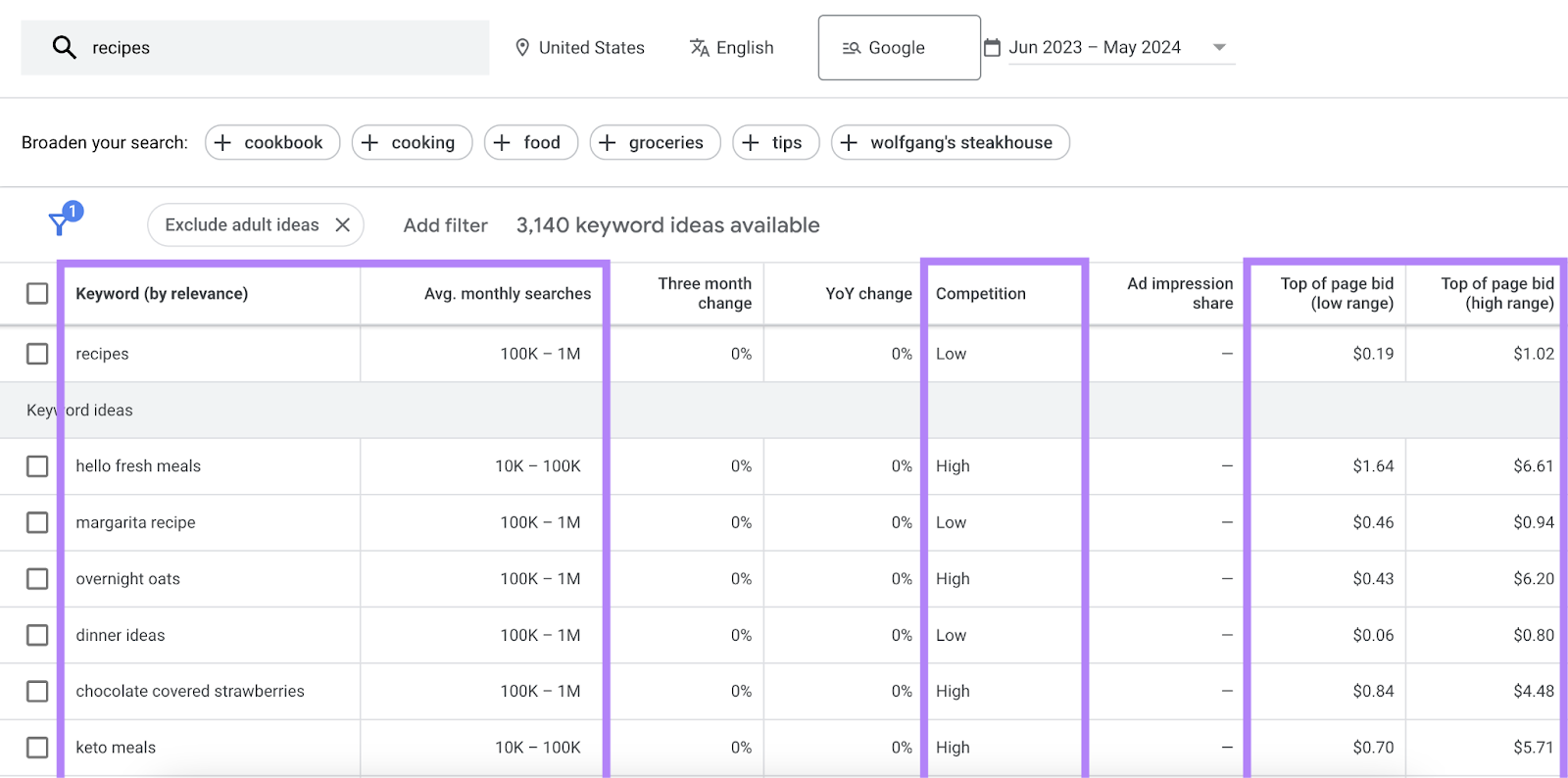
The search volume metric can give you a sense of how much potential traffic you could attract with a top-ranking result.
While the other two metrics aren’t as relevant for SEO as for ad campaigns, they can still be useful. Because they help reveal which terms advertisers think are most valuable.
You can also filter, sort, and download the entire list of keyword ideas.
Analyze Competitor Keywords
Your competitors are likely targeting many SEO search terms on their websites that are equally relevant to you.
And finding those terms means you don’t have to do all your keyword research from scratch. Because you can target some of those same terms. And attract relevant traffic.
Open the Organic Research tool, enter a competitor’s domain, and click “Search.”

Then go to the “Top Keywords” section and click “View all # keywords.”
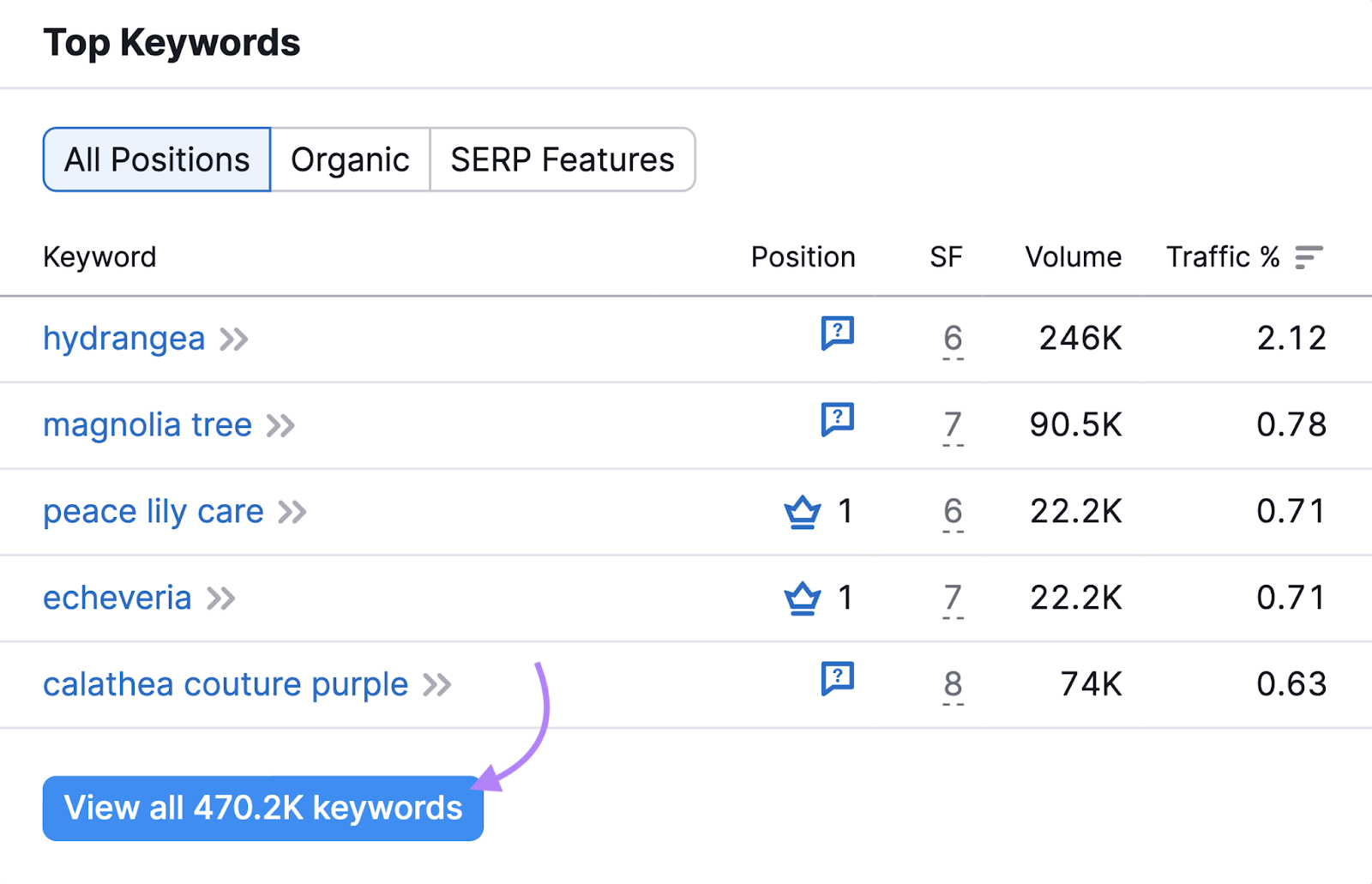
You’ll see a list of the SEO keywords your competitor is targeting and ranking for.
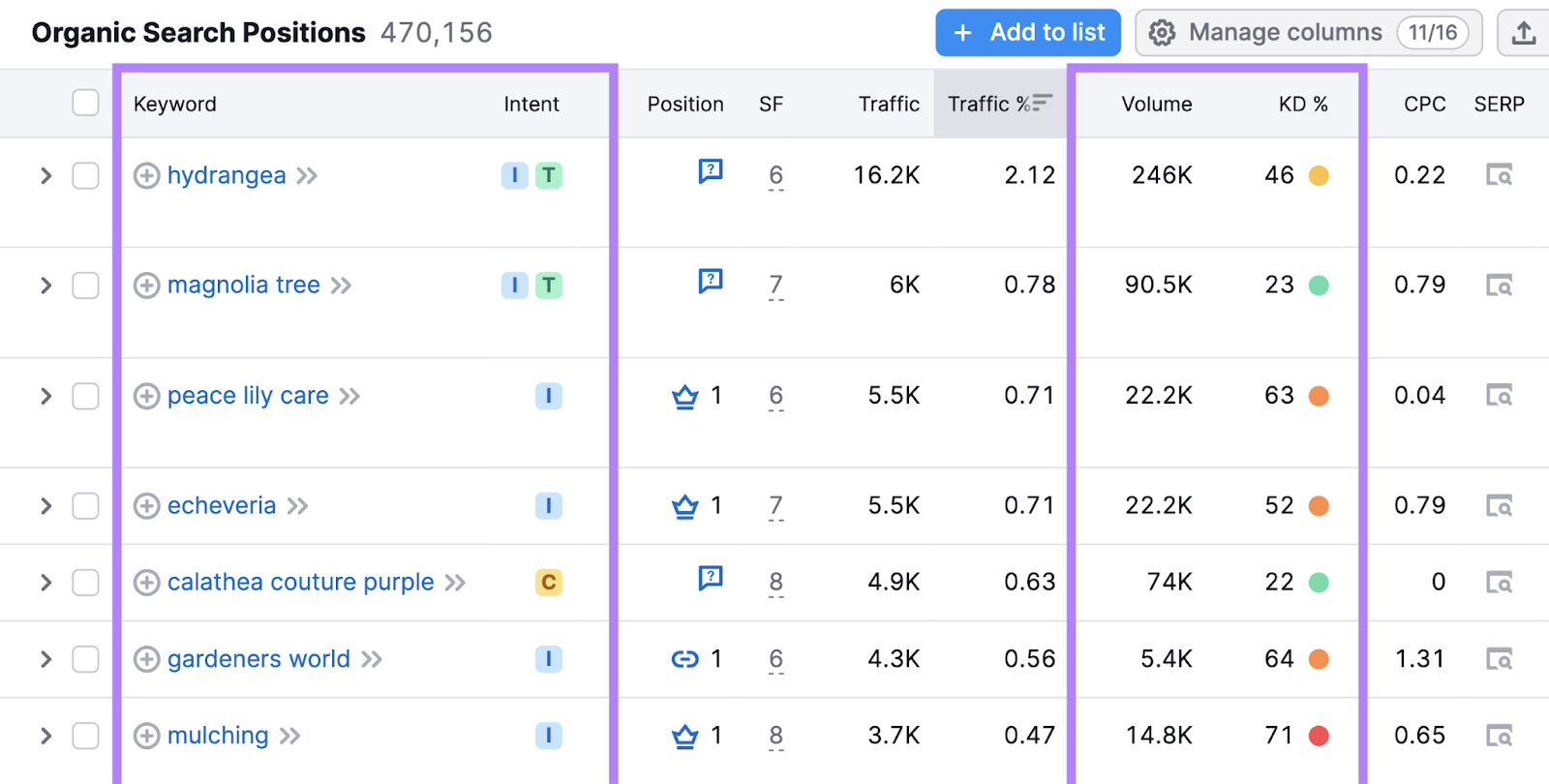
Once again, look at metrics like search volume, keyword difficulty, and intent to determine which ones are worth pursuing.
Get Ideas from ChatGPT
ChatGPT is an AI chatbot made by OpenAI that can generate responses to prompts.
While it’s not a dedicated keyword tool, you can ask it to generate keyword ideas for your website.
To use it, sign up for ChatGPT and start entering prompts.
For example, you could ask “What are some good keywords for a gardening website?” And ChatGPT will provide a list of relevant keyword suggestions.
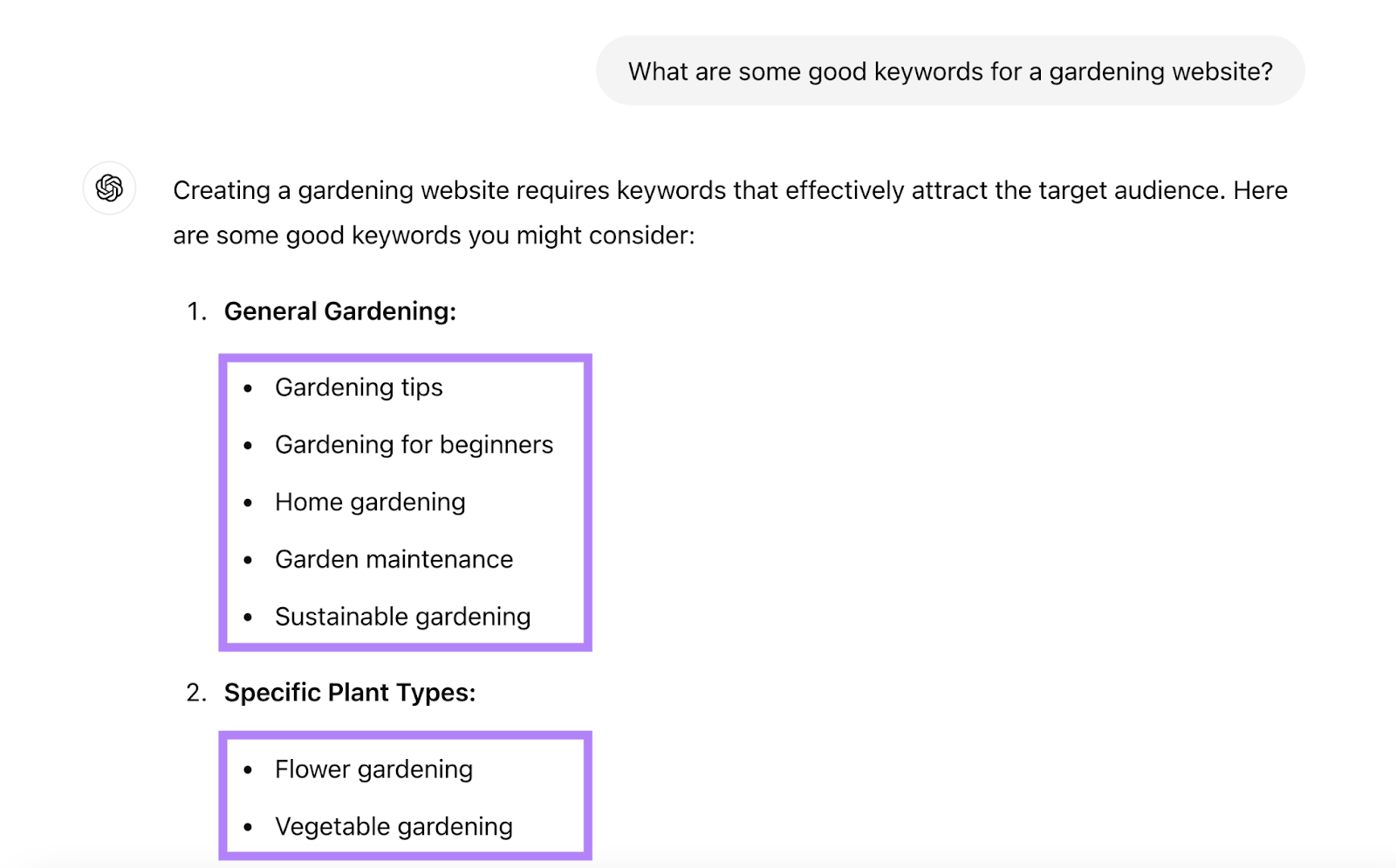
The suggestions don’t come with any data to help you determine whether they’re good options. So, think of the list as a quick starting point when beginning your keyword research process.
You can then use more specialized tools like Keyword Overview to expand on those keyword ideas and get richer data.
Use Google’s Autocomplete Suggestions
Google search can be a valuable tool for finding relevant SEO keywords for your site. Because as you start typing, the autocomplete function shows SEO keyword suggestions based on things like your search history and trending interests.
For example, if you type “recipes” in the search box, you might see suggestions like:
- “recipes with ground beef”
- “recipes for dinner”
- “recipes with chicken”

Add a space before your query to get even more ideas:
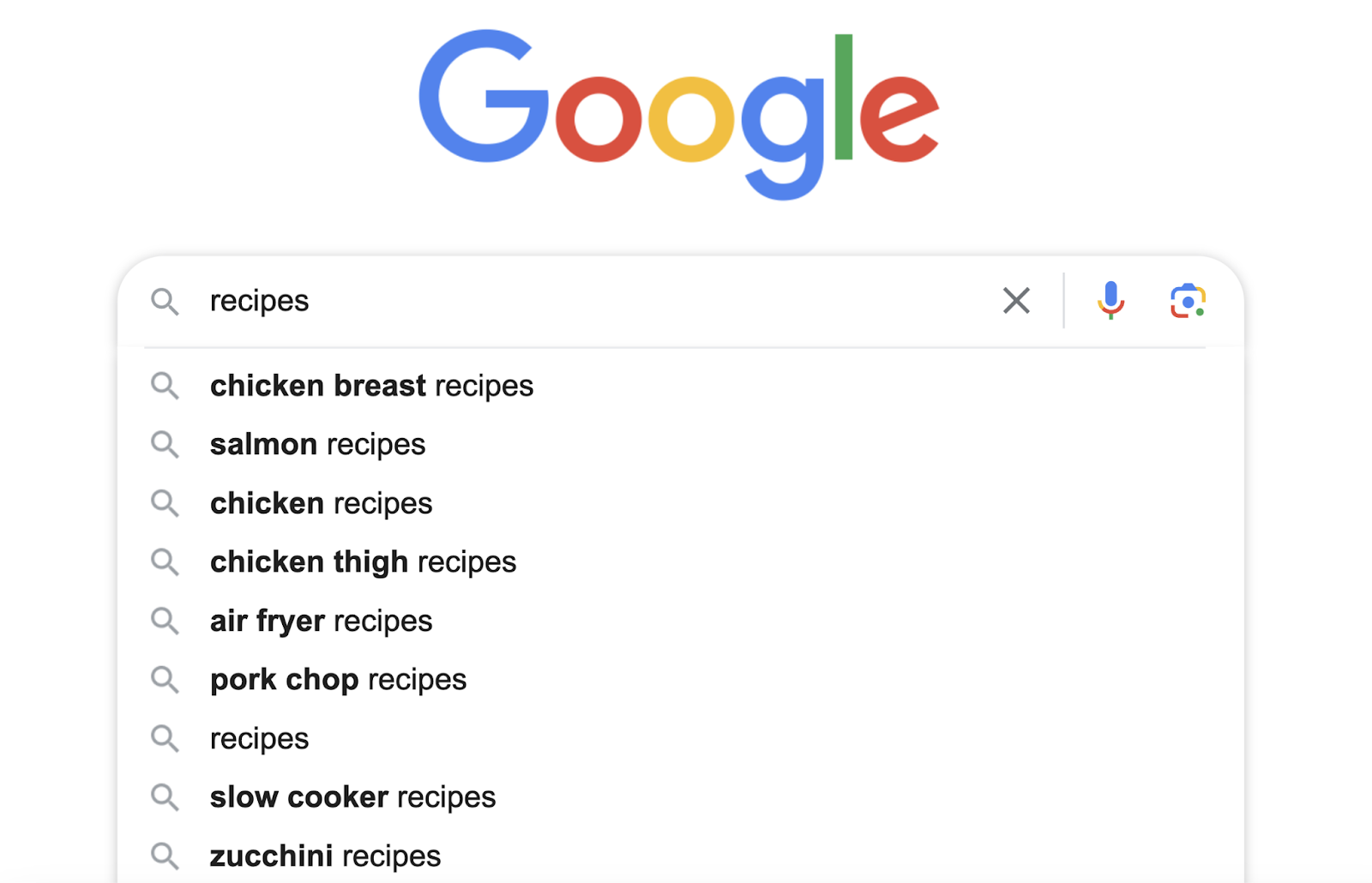
Once you have some keyword ideas, use a tool like Keyword Overview to analyze their metrics.
Open the tool, enter your keywords one by one, add your domain name, and click “Search.”
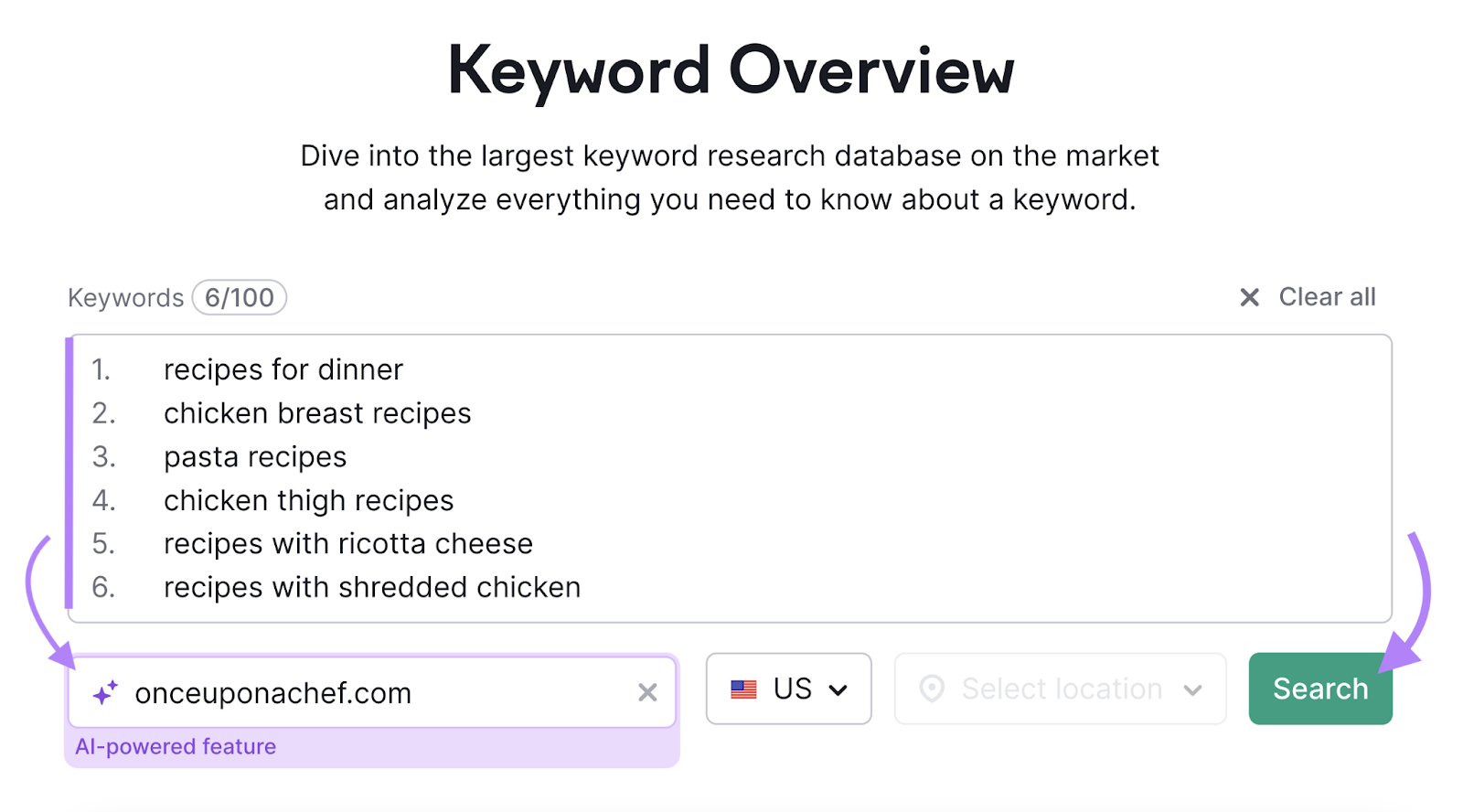
You’ll see each query’s search intent, search volume, and Personal Keyword Difficulty.
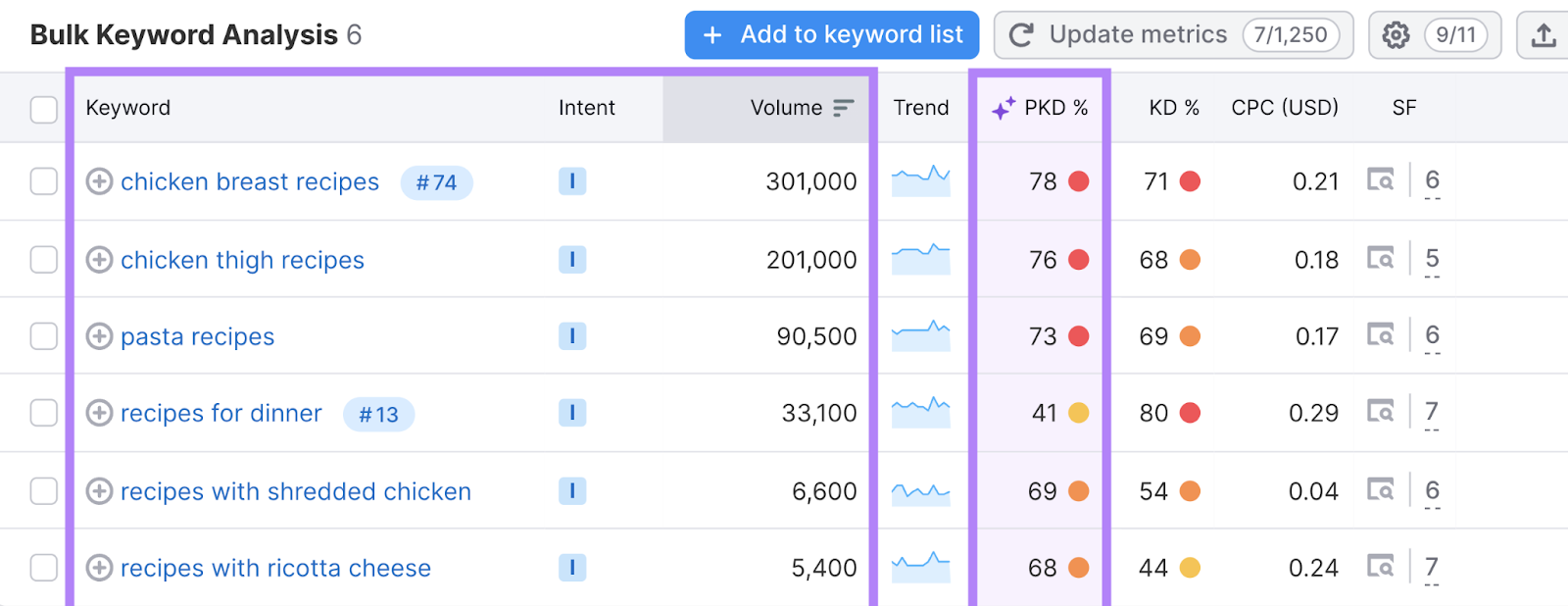
Use this information to determine which ones are most worthwhile to target.
Evaluate Existing Keyword Rankings
Your site is probably ranking for numerous SEO keywords already. And if you find out what they are, you can optimize your content and website to improve your rankings.
To find these search terms, use Google Search Console.
Log in to Search Console and go to the “Search results” report. And check the box for “Average position.”
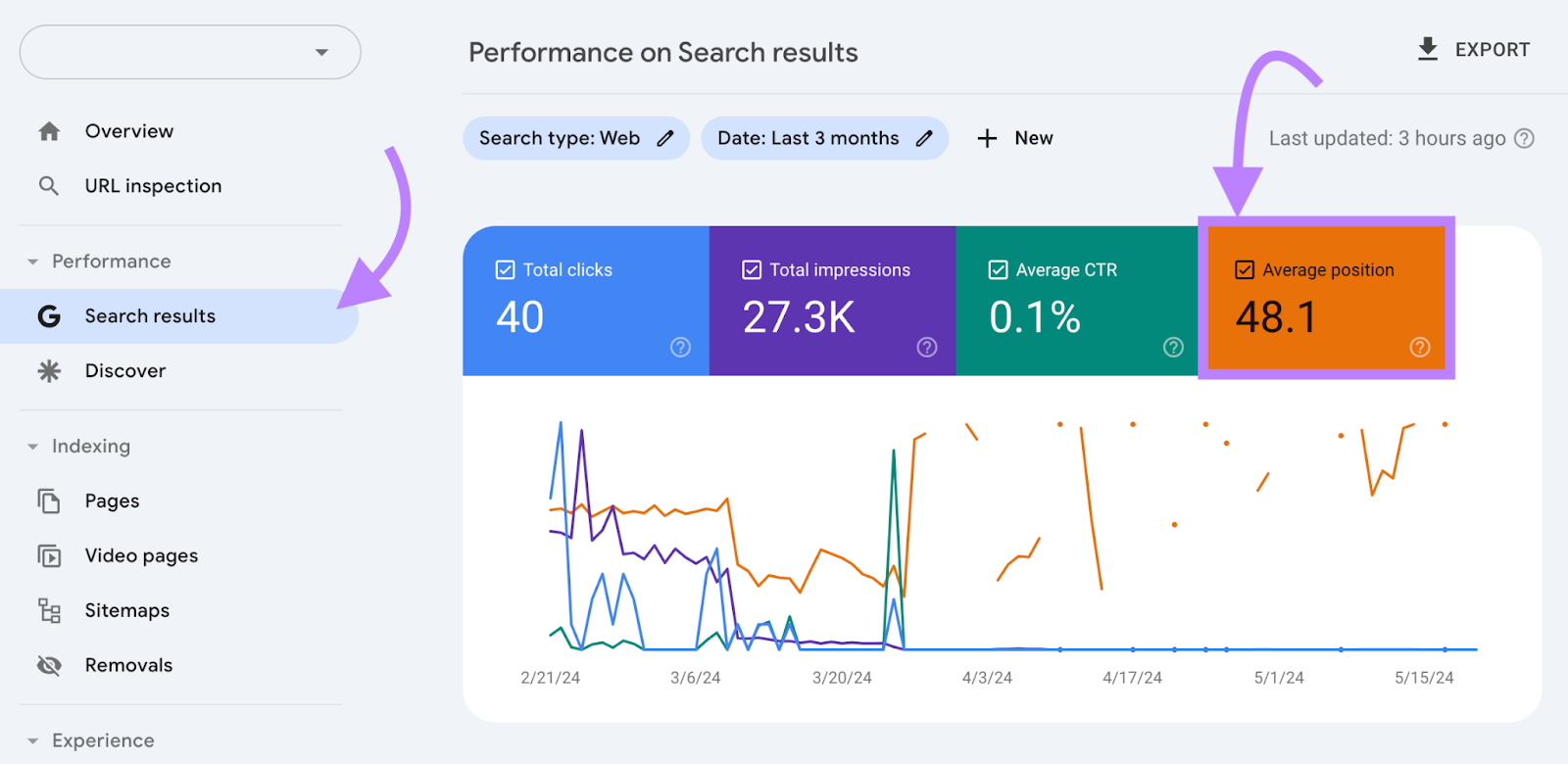
Then, scroll down to the “Queries” table and set a filter to only show keywords where your position is greater than 10.

You’ll see a list of SEO keywords that need more work.
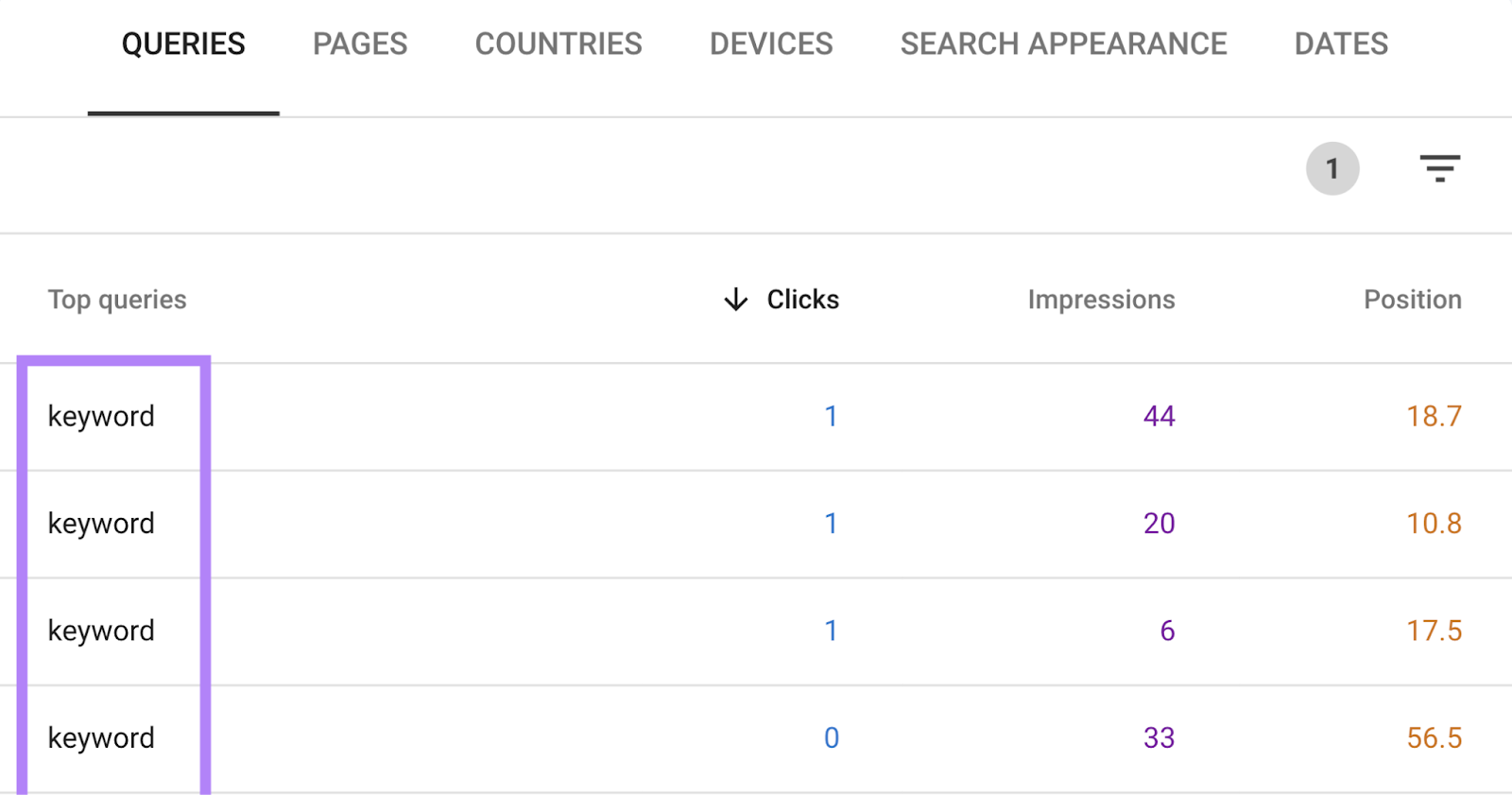
You can then optimize the content you already have.
How to Use SEO Keywords
Once you’ve found promising keywords, the next step is to target them on your website.
Here are a few tips for effectively targeting SEO keywords.
Create Quality Content
The best way to rank for your target SEO keywords is to create high-quality content that satisfies search intent.
For informational keywords, you’ll want to create detailed blog posts, guides, or other informative content types that thoroughly answer the query. By covering the topic in-depth, citing expert sources, and making it better than other content on the same topic.
For keywords with commercial and transactional intent, create detailed product or service pages that provide all the important users will need. Like details about features, pricing, comparisons with competitors, etc.
This Post Consumer Brands page for Puffins cereal is a good example. Because it features reviews, high-level details, information on where to buy the product, and more.
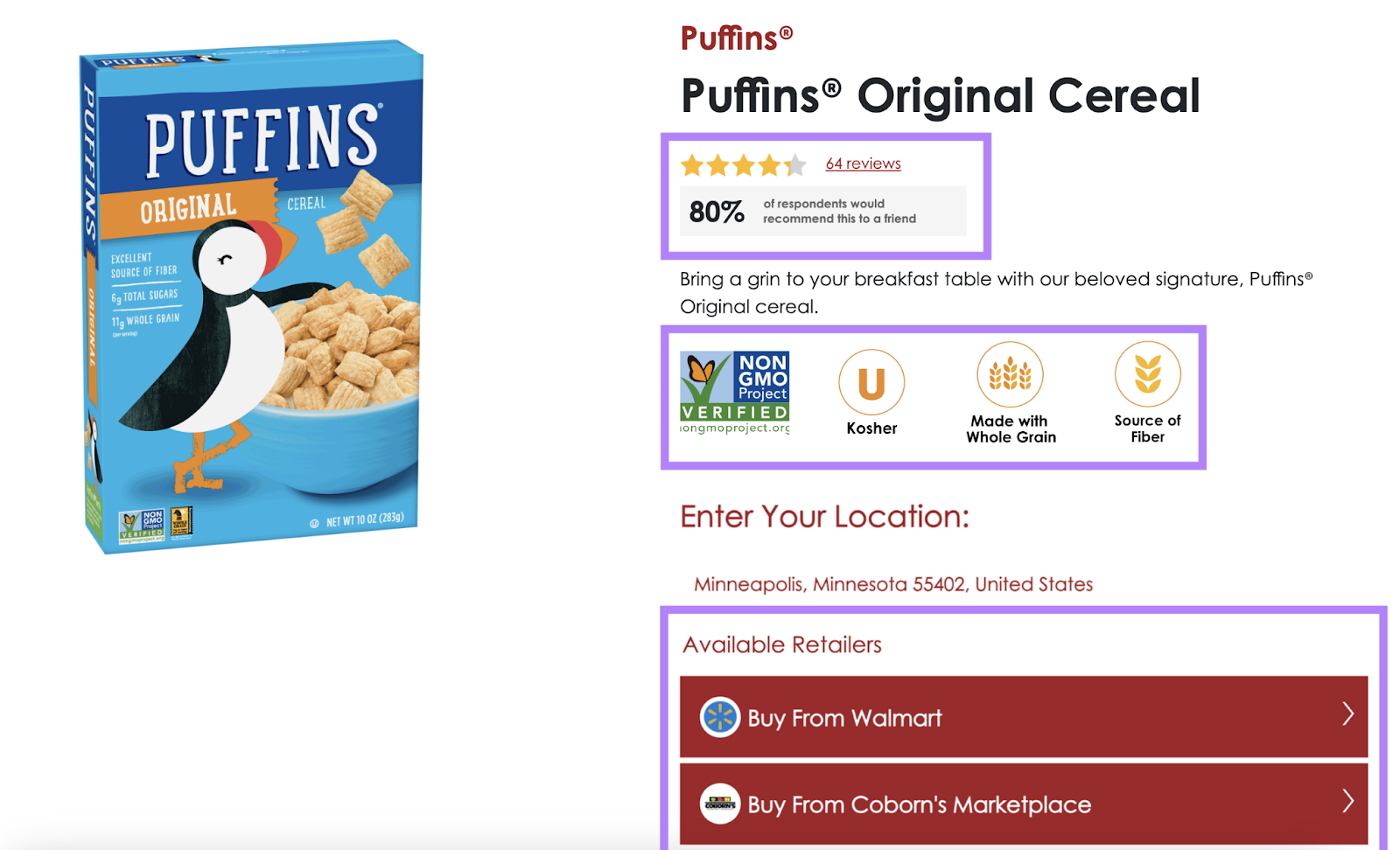
The more useful your content is, the more likely it is to rank highly.
You can also integrate multimedia elements like images, videos, graphics, and illustrations to enhance your content and make it more engaging and consumable.
Further reading: Quality Content: What It Is + 10 Actionable Tips for Success
Include Target Keywords in Strategic Places
You also need to strategically optimize each webpage for its target keywords. To help search engines understand your pages and make them eligible to show for relevant queries.
Here’s where to include them:
- Title tags: Add each page’s primary keyword to its title tag—the HTML that specifies a page’s title and can show in search results
- Meta descriptions: Use each page’s primary keyword in its meta description—the HTML page summary that can show in search results. While meta descriptions don’t influence rankings, they can still entice users to click through to your site.
- Headings (H1, H2s, H3, etc.): Include your SEO keywords in the headings when appropriate
- Body content: Naturally work in your target keywords a few times throughout the body content. But don’t overdo it— keyword stuffing is a spam tactic that can hurt rankings.
- URL slugs: Ensure that each page’s URL slug (the end portion of the URL) uses the primary keyword. For example, “https://example.com/blog/chicken-thigh-recipes.”
To check your existing content for keyword use, try the On Page SEO Checker.
The tool highlights which best practices you’ve applied. And which you need to work on—like incorporating your primary keyword in your body text.
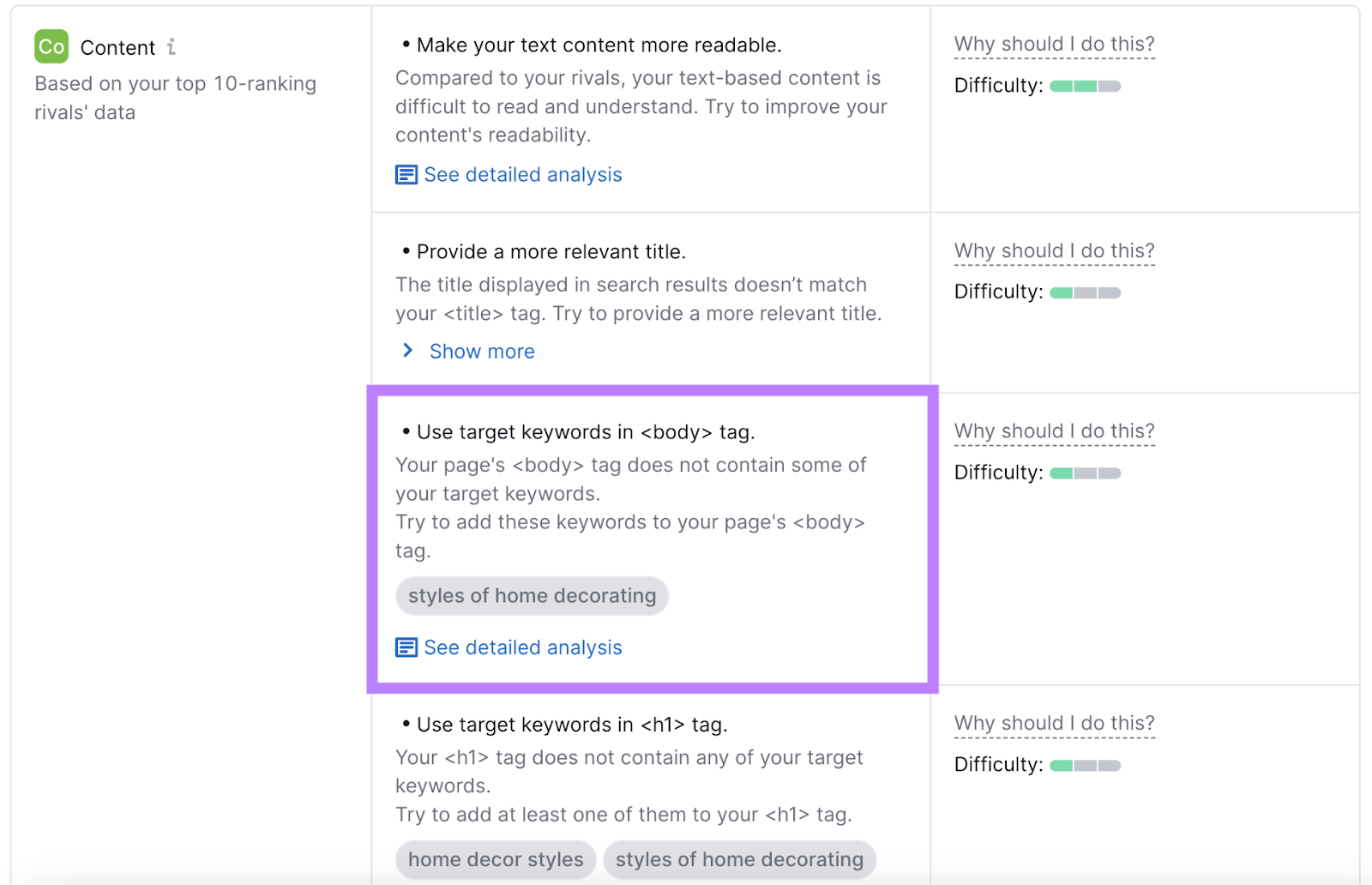
Track Your Progress
After you’ve implemented the above tips, your rankings should start improving.
Use Semrush’s Position Tracking tool to monitor your progress.
Once you set up a project in the tool, go to the “Overview” tab and scroll down to the “Rankings Overview” section.
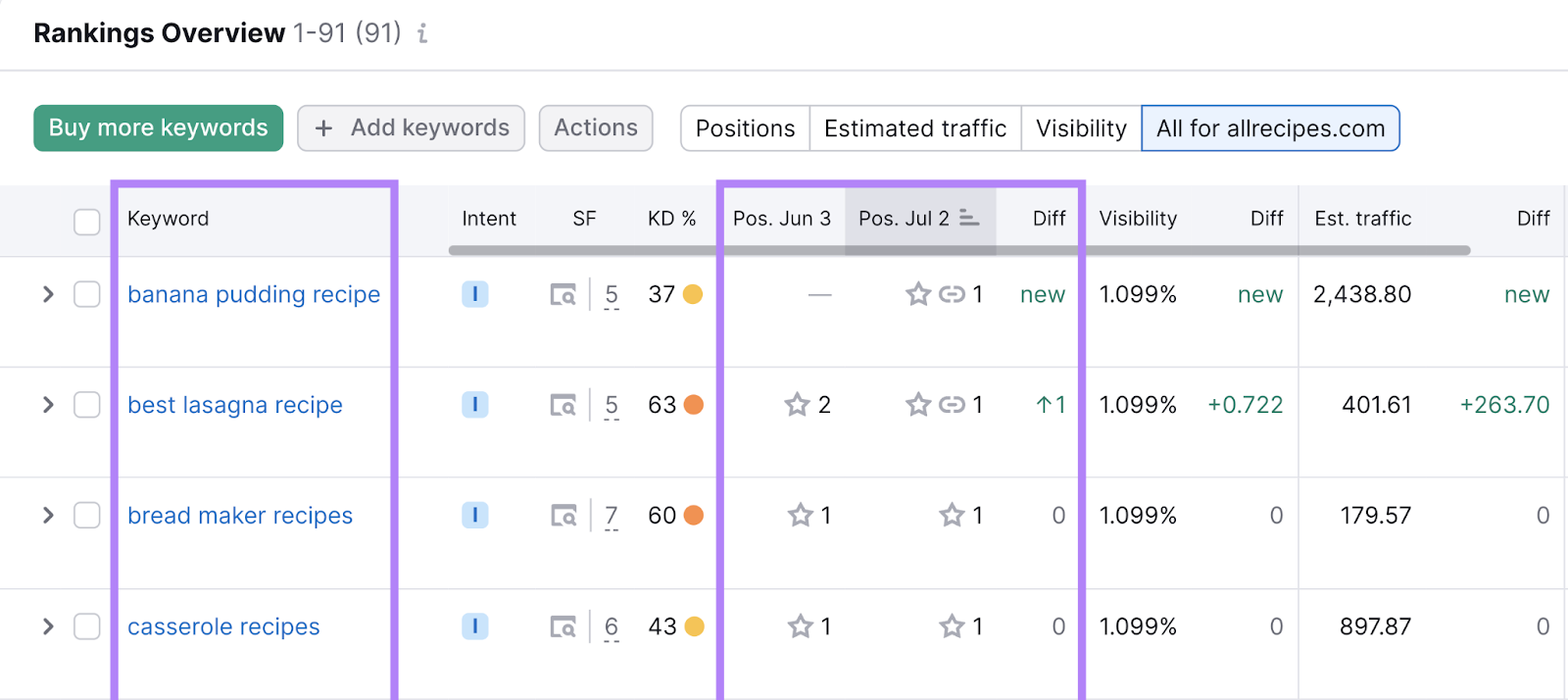
See where your website ranks for each of your SEO keywords. And make note of any dips that indicate it’s time to update your content.
Source link : Semrush.com
